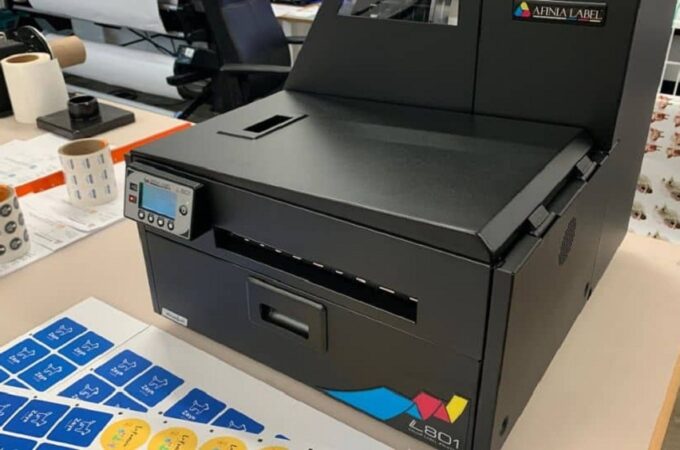
Reasons to go for eco-friendly packaging
Introduction
The selection of packaging materials has become a crucial factor for companies and consumers at a time of increasing environmental awareness. Companies are starting to realize how important it is to lessen their ecological imprint, which is why they are moving towards eco-friendly packaging. This article examines the seven specific advantages of using eco-friendly packaging to order eco friendly cookie packaging, including its positive effects on the environment, the economy, and society. The choice to choose eco-friendly packaging goes beyond simple environmental responsibility, impacting many facets of consumer and corporate behavior, such as reducing the negative effects of plastic pollution and improving brand reputation.
REASONS TO GO FOR ECO-FRIENDLY PACKAGING
Waste minimization and environmental conservation:
Eco-friendly packaging has many attractive advantages, two of which are decreased waste and preservation of the environment. Plastics that are disposable, in particular, have caused havoc on ecosystems with regard to contamination, loss of habitat, and risks to animals. Conventional packaging materials have all contributed to these issues. A sustainable substitute is provided by eco-friendly packaging solutions such as reused paper, plastic that breaks down, and compostable materials. Due to their organic breakdown, these substances have less of an adverse effect on the environment and are easier on landfills. Businesses can engage in an active role in the global endeavor to protect our planet and preserve biodiversity for future generations to come by selecting packaging that complies with ecological standards.
Reduced Carbon Dioxide Emission and Enhanced Energy Efficiency:
Comparatively speaking to conventional materials for packaging, environmentally conscious packaging often uses less energy and natural resources during manufacturing. Recycled paper and plant-based plastics are two examples of environmentally friendly products whose production methods usually produce less emissions of greenhouse gases. Businesses could tackle climate change by choosing products with a lower carbon impact. Energy conservation is additionally encouraged throughout the manufacturing chain by using eco-friendly packaging materials that are created and purchased locally, which further minimizes emissions caused by transportation. Reducing the ecological impact of packaging contributes to worldwide efforts to mitigate climate change and positions companies as environmental stewards.
Customer Choice and Market Differentiation:
As customers become increasingly ecologically concerned, there is a growing need for sustainable goods and packaging. In addition to satisfying this shifting customer need, adopting eco-friendly packaging helps companies stand out in a crowded market. Prioritizing sustainability increases a company’s capacity to draw in environmentally conscious customers, which promotes brand loyalty and favorable connotations. An effective distinction in a highly competitive marketplace is the use of eco-friendly packaging, which positions businesses as innovators in morality and social responsibility. A synergistic connection develops between the business and its environmentally concerned client base when corporate values and consumer values match.
Good Image of the Company and Corporate Social Responsibility (CSR):
Sustainable packaging programs play a major role in improving an organization’s CSR (corporate social responsibility) reputation and creating a great brand image. Brands that indicate an obligation to ethical behavior and environmental care are gaining favor with consumers. Businesses could indicate their intention to minimize their environmental effect by selecting sustainable packaging alternatives. This attracts moral and accountable customers who are looking for items that are both ethical and sustainable. Environmentally friendly packaging creates a good perception that goes beyond marketing; it becomes an essential component of the identity of an organization and enhances its standing as a socially conscious business.
Better Product Health and Safety:
Using environmentally friendly packaging materials does not only save the environment; it also renders products safer for customers. Traditional packing materials—particularly certain plastics—may have hazardous substances that could infiltrate into goods and endanger consumers’ health. Eco-friendly substitutes have been created to reduce these hazards, such as metal, glass, or certain types of plastic that break down. This not only assures the ultimate customer’s safety but also complies with the requirements and laws that are constantly changing in regard to the application of safer substances in packaging. Companies that emphasize product safety via environmentally friendly packaging stand to benefit from growing consumer awareness of these worries as consumers who are concerned about their health grow more cognizant of them.
Cost reductions and Operational Efficiency:
Despite the common belief that eco friendly packaging uae is prohibitively expensive, businesses often discover that adopting environmentally friendly procedures can end up in long-term savings on expenses and improve operational efficiency. Eco-friendly materials may need a larger initial investment, but total lifespan costs—which include waste disposal & regulatory compliance—usually result in lower overall prices. Furthermore, companies that use sustainable practices often find ways to increase productivity and streamline operations. A more financially robust company model is the result of packaging optimization of procedures and lower waste management expenses. Sustainable packaging materials are becoming more and more cost-competitive as advances in technology occur, and consumer demand for environmentally friendly products rises.
Complying with regulations and securing the future:
Sustainability of the environment is becoming more and more important in the worldwide legal structure around packaging materials. Selecting environmentally friendly packaging helps companies stay compliant with current laws and prepares them for potential changes that could be made. Stricter rules and norms are being implemented as a consequence of governments and international organizations realizing how packaging materials affect the environment. Companies who take steps to use environmentally friendly packaging techniques establish themselves as industry leaders in terms of regulatory adherence, hence reducing the possibility of legal disputes and fines. Organizations demonstrate flexibility and a dedication to ethical business conduct by keeping ahead of regulatory advancements.
Conclusion
To sum up, the positive aspects of environmentally friendly packaging go beyond environmental concerns and involve a range of favorable effects on companies, customers, and the environment. Adopting sustainable packaging techniques is in line with our shared obligation to build a more sustainable future since it reduces waste, lowers carbon footprints, improves brand reputation, and complies with regulations. Businesses that understand the inherent importance of environmentally friendly packaging not only support international conservation initiatives but also establish themselves as industry leaders in morality and progressive thinking. By revealing a multitude of benefits that transcend the boundaries of their merchandise, companies who embrace sustainability to buy food packaging products are demonstrating their devotion to a future in which packaging not only represents the goods it contains but also embodies a concern for the environment.





